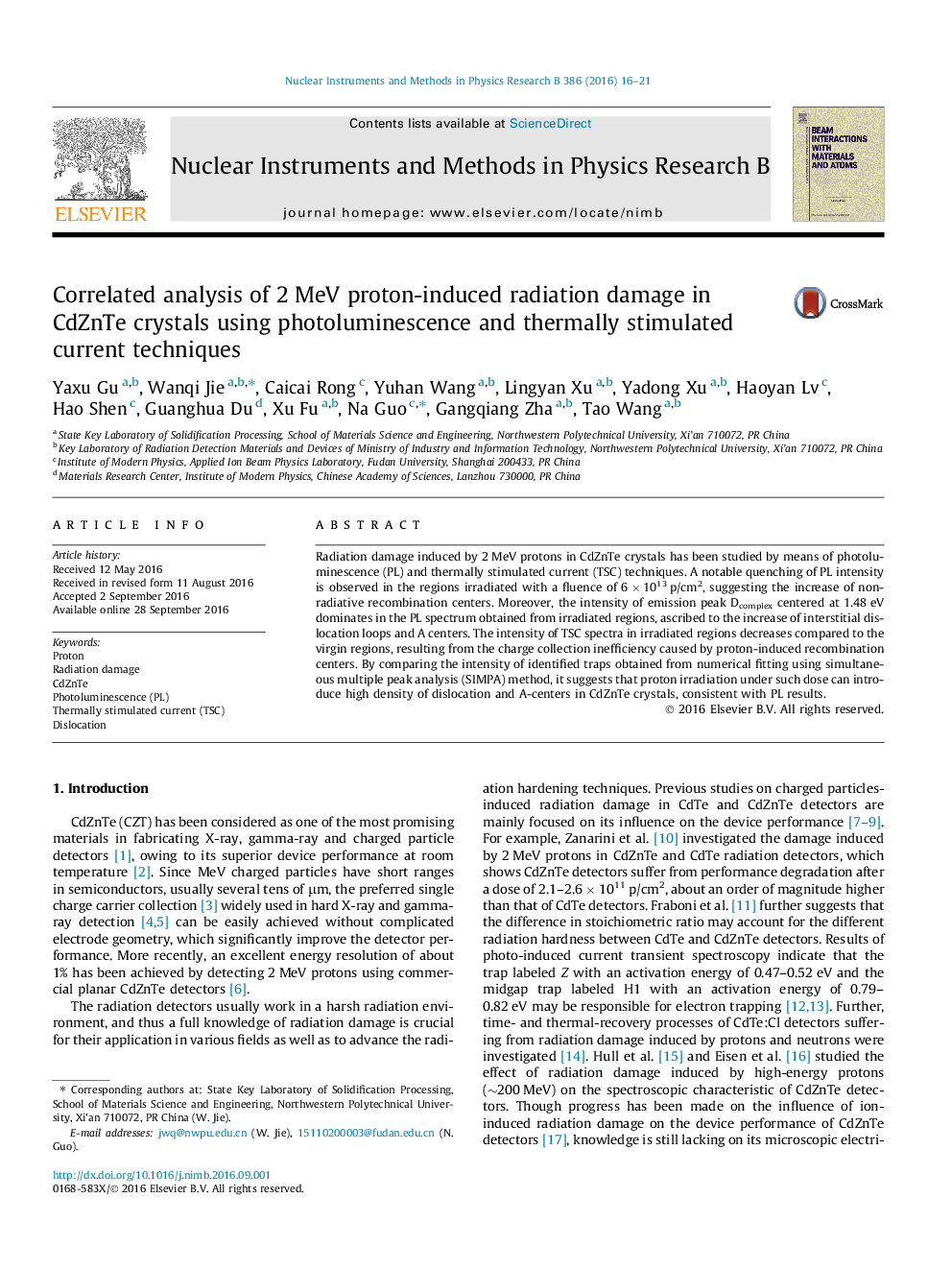| Article ID | Journal | Published Year | Pages | File Type |
|---|---|---|---|---|
| 5467735 | Nuclear Instruments and Methods in Physics Research Section B: Beam Interactions with Materials and Atoms | 2016 | 6 Pages |
Abstract
Radiation damage induced by 2Â MeV protons in CdZnTe crystals has been studied by means of photoluminescence (PL) and thermally stimulated current (TSC) techniques. A notable quenching of PL intensity is observed in the regions irradiated with a fluence of 6Â ÃÂ 1013Â p/cm2, suggesting the increase of non-radiative recombination centers. Moreover, the intensity of emission peak Dcomplex centered at 1.48Â eV dominates in the PL spectrum obtained from irradiated regions, ascribed to the increase of interstitial dislocation loops and A centers. The intensity of TSC spectra in irradiated regions decreases compared to the virgin regions, resulting from the charge collection inefficiency caused by proton-induced recombination centers. By comparing the intensity of identified traps obtained from numerical fitting using simultaneous multiple peak analysis (SIMPA) method, it suggests that proton irradiation under such dose can introduce high density of dislocation and A-centers in CdZnTe crystals, consistent with PL results.
Keywords
Related Topics
Physical Sciences and Engineering
Materials Science
Surfaces, Coatings and Films
Authors
Yaxu Gu, Wanqi Jie, Caicai Rong, Yuhan Wang, Lingyan Xu, Yadong Xu, Haoyan Lv, Hao Shen, Guanghua Du, Xu Fu, Na Guo, Gangqiang Zha, Tao Wang,
